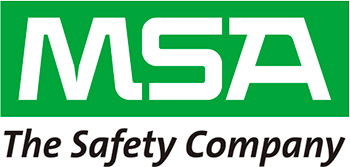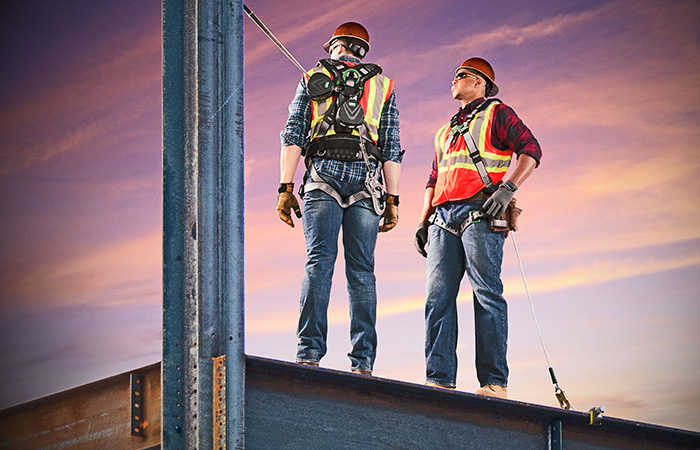
It’s early morning. A new day. A new jobsite. As your team is gearing up, you overhear mumbling and grumbling about the PPE (personal protective equipment). “It’s too hot.” “It’s too heavy.” “It kills me to put this thing on, so I’m thinking of not wearing it today.”
Before you get all worked up and get ready to discuss PPE compliance, safety, OSHA violations, and the like, just stop and think. Ask yourself what the driving factor could be. The answer may surprise you.
While tempting, it’s probably not fair to blame your workers. After all, they just want to work without the distraction of pinching, pulling, or irritating equipment. And you? Well, you have a zillion responsibilities to deal with. You’re serious about tending to all of them, including—and especially—the safety and well-being of your crew.
So, instead of shaming people into forced compliance or blaming yourself for your workers’ less-than-positive attitudes, get real about what’s actually at issue: comfort.
PPE Types & Applications
When it comes to PPE, comfort is not the first thing most people think of. PPE comfort also is not a one-size-fits-all kind of thing. In fact, it’s anything but.
PPE has the specific job of providing personal protection to people with varying body shapes and sizes, not to mention differing workplace applications.
Within the construction industry, there are five major types of PPE:
- Fall protection (harnesses, personal fall arrest systems)
- Head protection (hard hats, helmets)
- Hearing protection (ear plugs, earmuffs)
- Eye and face protection (safety glasses, visors, welding shields)
- Respiratory protection (half mask, full mask, air purifying)

It’s up to you or your designated safety manager to choose the appropriate PPE for the job. That can mean providing a utility construction worker with an arc flash-rated visor or equipping a steep roof worker with a leading-edge fall protection system.
It’s also up to you or your designated safety manager to choose the appropriate PPE for the person in terms of size, fit, and comfort. With PPE purchasing decisions, it’s an unfortunate fact, but comfort is often overlooked as an important consideration.
That’s because, in some ways, comfort is subjective, like mattress comfort. What’s comfortable for one is not necessarily comfortable for another. But even if you’ve never shopped for a mattress, you know that mattresses offer a variety of support, ranging from soft to extra firm. Ask different people which support is best and you’ll get almost as many different answers.
Choosing a comfortable mattress comes down to only one thing; the personal preference of the sleeper. Regardless of which mattress is purchased, though, the end goal is the same: a better night’s sleep.
And, so it is with PPE. Comfort is whatever makes the PPE more wearable for the duration of the job at hand. Providing comfortable PPE isn’t about coddling the worker, nor about tailor fitting it to each and every worker. It’s about promoting PPE wearability to enhance compliance, to get the job done, and to go home safely at the end of the workday.
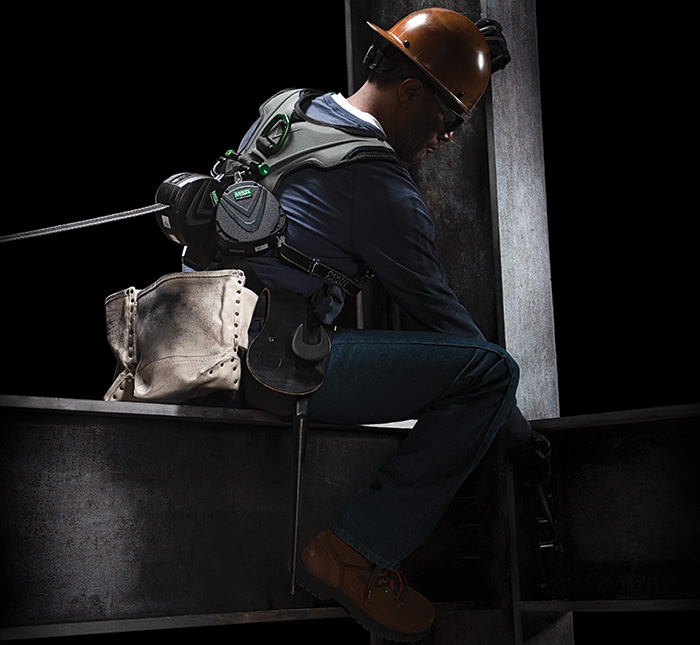
Comfortable PPE May Be Key to Boosting Worker Safety, Productivity
If PPE is uncomfortable or restrictive in even a small way, wearing it can feel a lot like wearing a pair of ill-fitting shoes that dig in or rub in all the wrong places. For most of us, poorly fitting shoes would lead us to make one of two decisions:
- Declare the shoes unwearable and take them off, or
- Continue wearing them to the detriment of our feet and our focus. In the latter case, the pain—not our surroundings—would become all we could think about.
Perhaps that’s why some workers don’t wear their PPE—even when they know they should. This is true in many instances, as noncompliance is one of the most frequently cited OSHA violations. Unfortunately (and unlike terrible shoes), not wearing PPE can lead to dire or deadly consequences.
MSA Safety has spent quite a bit of time listening to the thoughts and opinions of those who wear PPE on the job, day in and day out, year after year. One important conclusion: If PPE is uncomfortable, there’s a greater chance the worker will not wear it. On the flip side, workers are more likely to don PPE that is comfortable and, as a result, they’re happier, more productive, and, ultimately, safer on the job.
MSA Safety’s customer research, including participatory ergonomics or involving the worker in the analysis and design phases, has led to a saying the company uses to remind themselves of the value of comfort in designing and manufacturing PPE: “The safest PPE is the one you don’t know you’re wearing.”
Of course, no PPE can hold claim to being comfortable all day, every day. Still, it is certainly time for comfort to be move higher up the ranks of desirable PPE criteria so that both business owners and construction workers win.
Beyond Comfort: Things You May Want to Know
With an understanding of the potential benefits of selecting correct—and comfortable—PPE, here are a few other PPE-related things you may want include in your safety program.
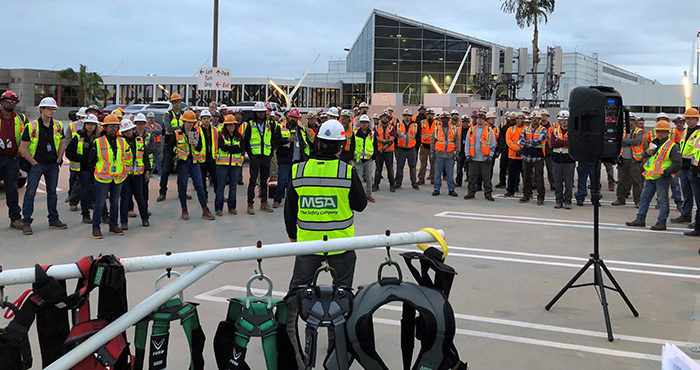
- Education—When it comes to PPE, it’s a good idea to communicate, communicate, communicate. All-team meetings are ideal for sharing general PPE information, instructions, and guidelines. The morning huddle can be a place to relate specifics about a particular topic or issue. For example, take hearing protection. To some workers, wearing hearing protection seems optional. You, however, know that it’s not. Take time to share the cold, hard facts about noise in the workplace and its effect on unprotected ears. Explain the role earmuffs and earplugs play in helping prevent irreversible hearing loss, and hearing loss-related miscommunication that slows down operations or endangers others.
- Training—Commit to providing consistent, ongoing training to instill in your workers the necessity of situational awareness. Train workers to develop a sense of when, where and how accidents happen. Be sure to include accident prevention, accident avoidance and emergency response in your training, too.
And whether or not OSHA requires it, consider including PPE-specific training that covers at least these areas:
- When to wear it
- How to use it (donning, doffing, and adjusting)
- Pre-wear and post-wear inspection
- Care, maintenance and useful life
- Responsibilities—As a business owner and employer, it’s up to you to ensure that everyone knows who is responsible for what. When it comes to PPE, it’s your responsibility to provide the equipment. It’s the worker’s responsibility to wear it and report damage. Since those are just a few of the many responsibilities, you may want to document your PPE policies and make them available to everyone.
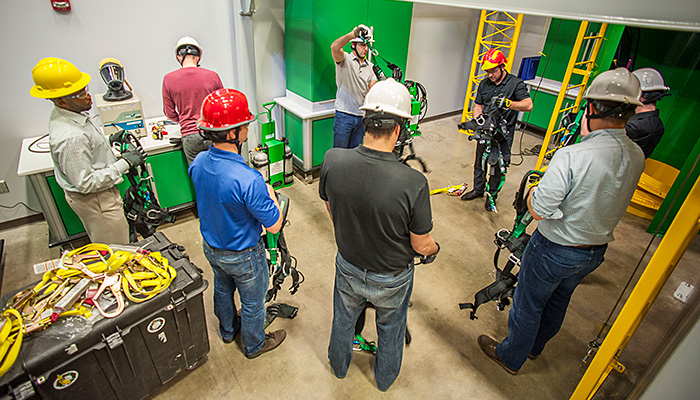
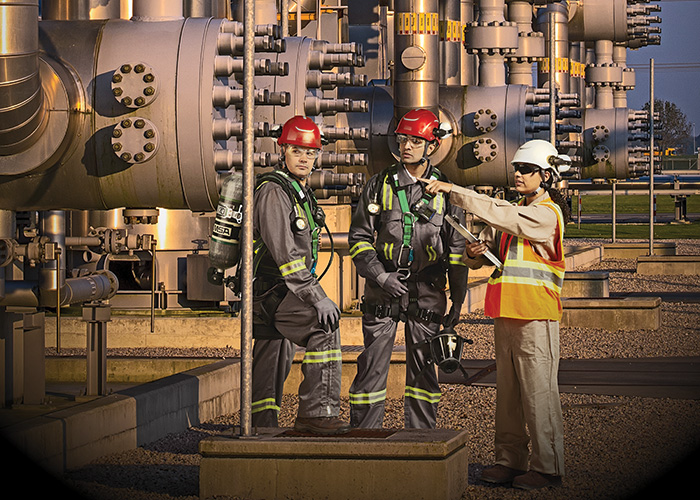
The Comfort Effect
General workplace studies show that worker comfort is good for business, leading to improved employee satisfaction and greater productivity. The correlation between PPE comfort and worker willingness to wear PPE has yet to be scientifically studied. Anecdotally, though, when PPE fits well, looks good, and feels comfortable, it brings about many positives, including, and especially, fewer worker complaints and refusals to wear PPE. And, that can’t help but be beneficial for business owners.

